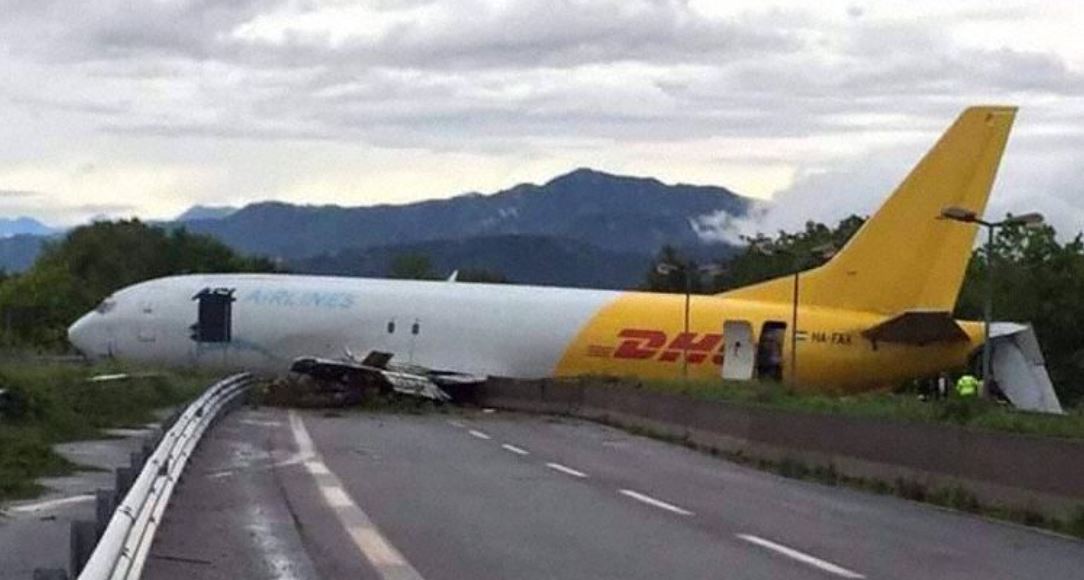Contributing factors were:
- the captain's decision to not go around (this decision is of decisive importance in the chain of events that characterized the occurrence)
- inadequate adherence to flight parameters within the last phase of landing
- failure to disable autothrust prior to landing
- low light conditions and presence of storm cells with heavy rain at the time of the occurrence (environmental factor), which may have contributed to the loss of situational awareness
- tunnel vision by the crew in the final phase of the flight in which both flight crew were intent on acquiring external visual references remaining unaware that the aircraft had flown over the runway for 18 seconds at high speed
- poor assertiveness by the first officer in querying decisions by the captain
Finally, it can not be ruled out the the accident may also need to be attributed to fatigue, although not perceived by the crew, the fatigue may have influenced cognitive processes in particular with the commander interfering with proper decision making.

Photo: @GuzmanGarmendia Twitter
The ANSV reported the crew had already performed two night flights that night. On approach to Bergamo the crew requested the ILS approach to runway 28, established on the ILS and was cleared to land on runway 28, tower reported the runway was wet and reported the latest weather.
The aircraft overflew about 2/3 of the runway a few meters above the runway surface, touched down 7310 feet down the runway at 159 KIAS and failed to decelerate (based on the FDR data the braking coefficient was determined between 0.20 and 0.22 within the FAA requirements for grooved runways). The aircraft overran the end of the runway and came to a stop 520 meters past the runway end.
Both flight crew managed to evacuate the aircraft and were taken to hospital, both were diagnosed with spinal fractures and contussions. The aircraft sustained substantial structural damage.
Another aircraft on final approach behind the B734 reported the loss of the localizer signal and went around.
The ANSV analysed that the crew conducted a proper flight preparation. The captain decided as a precaution to have more fuel lifted up (7200kg) than required (6535kg).
The flight was uneventful until 9nm before touchdown, when the aircraft intercepted the localizer. The weather radar was showing signficiant weather returns indicating thunderstorms near the runway, the captain stated that they would not go around because the go around path was blocked by the thunderstorm cells.
Descending through 1600 feet AGL the captain, pilot flying, disconneced the autopilot, however, both pilots did not recognize that autothrust had remained engaged. It is unclear whether the autopilot was disconnected by the crew or whether it disconnected due to brief loss of data due to weather. The response times to the disconnect wailer were typical for a manual disengagement of the autopilot. Deviations from the ILS path began after the autopilot was disconnected but ceased when the aircraft descended through Minimums at 200 feet AGL. The first officer provided verbal input to maintain the glidepath.
The autothrottle increased the engine thrust reaching 97% N1 while the aircraft maintained between 30 and 20 feet AGL. The commander stated, that although he had his hand on the thrust levers, he did not realize their movements. During the 18 seconds until touchdown the speed remained basically constant, there was no communication between the pilots who were obviously preoccupied. Spoilers deployed automatically, the auto brakes engaged, the thrust reversers deployed and reverse thrust was applied, the aircraft overran the end of the runway at 109 knots. The captain later explained he preferred to maintain the runway direction due to the high speed of the overrun rather than to turn right.
The ANSV analysed that the autothrust system had switched to MCP Speed when the autopilot was disengaged. The autothrust system was programmed to retard at 27 feet AGL and would disengage 2 seconds after touch down. The engines retarded evident by the decrease in engine N1 below 27 feet.
No evidence of hydroplaning was found.
The ANSV analysed that during the final phase of the approach the aircraft entered heavy rain, the wind screen wipers were operating at maximum speed. It is plausible to assume that the flight crew, in trying to regain visual references for landing, may have fallen victim to optical illusions. In addition the wet track could have impacted the perceiption of depth causing an inaccurate flare maneouver. The ANSV mentions the commander stated he could see the runway but not its surface.
From the evidence on hand there is no indication any of the aircraft systems was malfunctioning nor that the airport lightings contributed to the accident.
The ANSV analysed a blatant lack of assertiveness was demonstrated by the first officer during the interviews when he stated: "It could have been a good idea to call a go around, but we had decided earlier to not go around." The first officer had logged just 86h on 737s, and told the inquiry that, while he was tempted to question this decision, he felt he did not have the experience to evaluate the situation and instead chose to trust the captain’s judgement. |
 HA-FAX 737-400F Runway Excursion on Landing
HA-FAX 737-400F Runway Excursion on Landing


